Researchers at Stanford University have developed a tiny, foldable microscope that is made of paper, but can magnify objects up to 2,000 times their original size.The origami microscope, called the Foldscope, has already been sent to 10,000 testers in dozens of countries. So far, it has revealed the hidden life of tiny objects lurking in the Amazon jungle. [Read the full story on the Foldscope microscope]
Mysterious mite
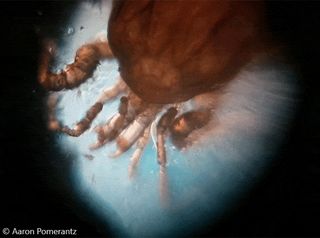
Aaron Pomerantz, an entomologist with the Tambopata Research Center in Peru, took the pocket-sized microscope out when exploring the Amazon jungle. When he encountered a mysterious looking, tiny mite, he was able to send the ultra-closeup images to other researchers and have it identified. (Photo credit: Aaron Pomerantz)
Cheap parts
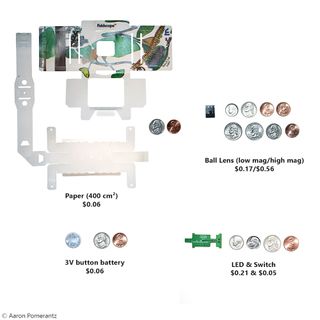
The Foldscope can be made with parts that cost less than one dollar. The innovative design takes advantage of the fact that all a microscope really needs is a curved glass surface to bend light, so the Foldscope uses tiny glass beads to create the desired magnification. When people want to share their photos of their tiny discoveries, they can place their phone on top of the microscope to transfer the images. (Photo credit: Aaron Pomerantz)
Weird plant growth
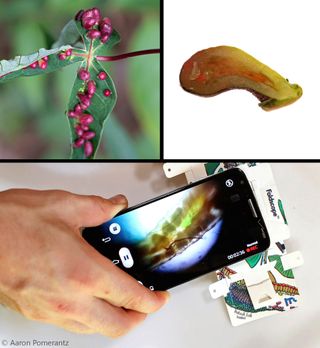
One of the strange things Pomerantz encountered were leaf galls, or strange growths that dot some plant leaves. Leaf galls form when insects chew through or burrow through leaves to place their eggs or larvae. This can stimulate the plants to produce a local excess of growth hormone, leading to the strange, bumpy growths. Here, Pomerantz was able to identify the type of larvae responsible for these leaf galls.
Sign up for the Live Science daily newsletter now
Get the world’s most fascinating discoveries delivered straight to your inbox.
Skipper wings
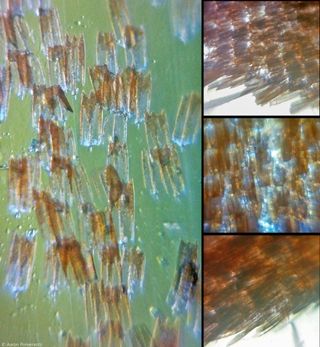
Here, the origami microscope reveals some of the texture on Skipper Butterfly wings. Though Skippers may fly worldwide, they are in abundance in the Amazon Rainforest. Because the Foldscope is pocket-sized and can be assembled in less than 10 minutes even by a child, Pomerantz has gotten in the habit of taking it with him on nature walks.
Hidden beach secrets
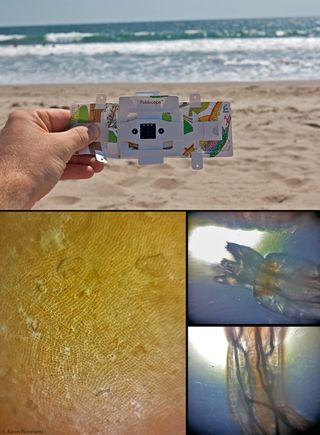
When he returned home to the Los Angeles area, Pomerantz also managed to take some photos of the hidden life that lurks near the sea. Here, he captured some of the kelp spotted at the beach closeup, as well as some of the sea creatures, such as a worm, that ride the waves.
Milkweed plant
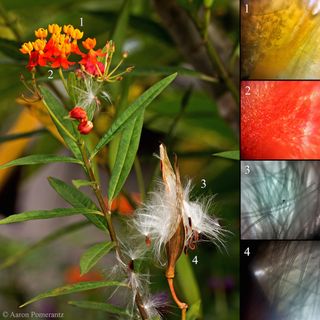
Here, Pomerantz used the origami microscope to show the strange texture underlying the Milkweed plant.
Rough surface
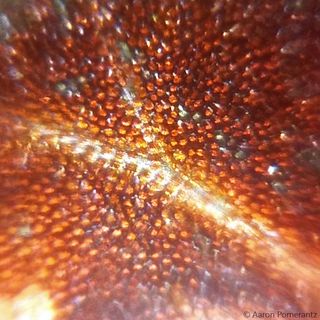
Even the smoothest of flower petals may look different up close. Here, Pomerantz used the foldscope to reveal the dotted texture of a flower petal.
Insect infection
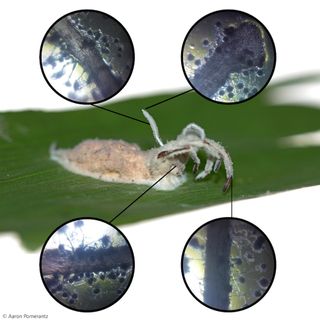
The origami microscope also revealed the parasite Cordyceps which had infected a spider. Though the black spots are so miniscule that they are barely visible to the naked eye, with the Foldscope, the fine structure of the fungus is revealed.
Follow Tia Ghose on Twitter and Google+. Follow Live Science @livescience, Facebook & Google+. Original article on Live Science.

Tia is the managing editor and was previously a senior writer for Live Science. Her work has appeared in Scientific American, Wired.com and other outlets. She holds a master's degree in bioengineering from the University of Washington, a graduate certificate in science writing from UC Santa Cruz and a bachelor's degree in mechanical engineering from the University of Texas at Austin. Tia was part of a team at the Milwaukee Journal Sentinel that published the Empty Cradles series on preterm births, which won multiple awards, including the 2012 Casey Medal for Meritorious Journalism.










